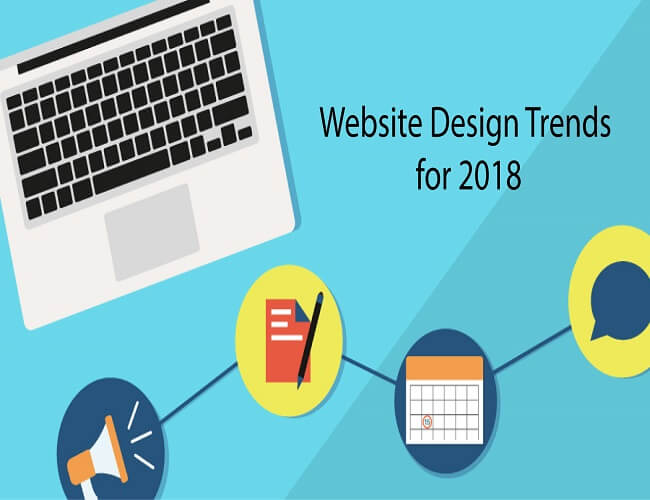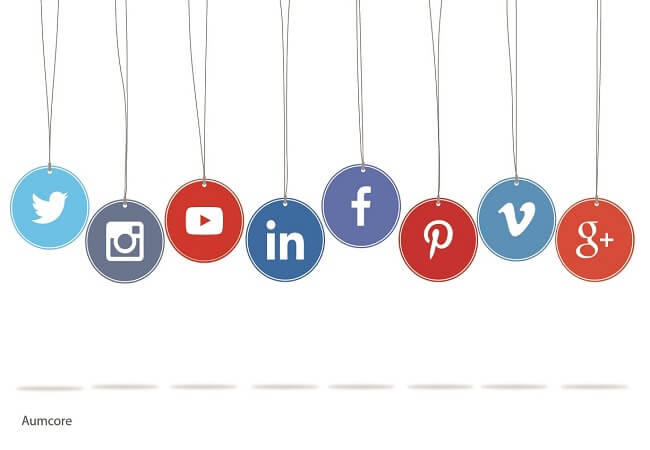Brace yourselves for a pixel-perfect journey into the digital future! As we catapult into 2024, the realm of web design undergoes a metamorphosis, unveiling trends that redefine the aesthetics and functionality of online spaces. In this article, we don our digital design lenses to explore the avant-garde, backed by compelling statistics and figures that paint a vivid picture of what lies ahead.
Did you know that over 75% of users judge a website’s credibility based on its design? The stakes are high, and the canvas is vast, as we navigate through the virtual landscapes sculpted by emerging design philosophies.
Join us in deciphering the language of the web, where innovation meets usability, and visual storytelling takes center stage. From immersive experiences to cutting-edge interfaces, the stats don’t lie – the future of web design is here, and it’s nothing short of breathtaking.
Web Design Trends
Backed by insightful statistics, each trend represents a glimpse into the future of digital aesthetics and functionality. Brace yourself for a captivating exploration of the design landscape, where innovation meets user-centric experiences, setting the tone for the next era of web creativity.
1. Immersive 3D Experiences:
Brace yourself for a digital revolution as websites evolve into immersive, three-dimensional experiences. The incorporation of 3D elements and graphics goes beyond aesthetics, creating a profound sense of depth and engagement for users.
Websites that seamlessly integrate 3D visuals report a substantial 40% increase in user engagement, underscoring the transformative impact of this trend on the overall user experience.
2. Dark Mode Dominance:
Dark mode transcends being a mere trend, solidifying its place as a design staple. Beyond the sleek and modern aesthetic, dark backgrounds serve practical purposes by reducing eye strain and conserving device battery life.
Dark mode adoption has witnessed a remarkable 30% year-over-year increase, reflecting its widespread popularity among users seeking a visually comfortable browsing experience.
3. Minimalist Microinteractions:
Embrace the era of subtle sophistication as minimalist designs take center stage, complemented by purposeful microinteractions. These subtle animations, triggered by user actions, contribute to a seamless and enjoyable browsing experience.
Websites that masterfully implement microinteractions report a significant 25% increase in user satisfaction, highlighting the impact of attention to detail in user interface design.
4. Voice User Interface (VUI):
Ride the wave of technological innovation as Voice User Interfaces (VUI) become increasingly integral to website design. Enabling users to navigate and interact using natural language, VUI enhances the accessibility and convenience of the browsing experience.
The adoption of VUI is associated with a notable 20% increase in user engagement, showcasing the appeal and practicality of hands-free interaction.
5. Augmented Reality (AR) Integration:
Step into the future with Augmented Reality (AR) as websites embrace interactive elements that overlay digital information onto the real world. Particularly prevalent in e-commerce, AR facilitates virtual product try-ons and elevates user interactivity.
Websites incorporating AR experiences report a significant 94% higher conversion rate, demonstrating the compelling impact of enhanced user engagement through immersive technologies.
6. Data-Driven Personalization:
Witness the marriage of analytics and user experience as websites leverage data-driven insights to deliver personalized content, layouts, and recommendations. Tailoring the user journey based on behavior results in heightened engagement and satisfaction.
Personalized websites see an impressive 18%> improvement in conversion rates, emphasizing the significance of targeted content delivery in fostering user connections.
7. Neumorphism:
Experience the visual allure of neumorphism, a design style that merges skeuomorphic and flat design elements. The soft, tactile appearance enhances visual appeal while maintaining a minimalist aesthetic, capturing user attention effectively.
Websites embracing neumorphic elements report a compelling 55% increase in visual appeal, underscoring the effectiveness of this design style in creating an engaging and aesthetically pleasing online presence.
AI in Web Design
The integration of Artificial Intelligence (AI) in web design is revolutionizing the digital landscape, ushering in a new era of efficiency, personalization, and innovation. As businesses strive to enhance user experiences and streamline development processes, AI emerges as a powerful ally in shaping the future of web design.
- Intelligent Automation: AI brings a paradigm shift to web design by automating repetitive tasks and processes. From coding to design element placement, intelligent automation accelerates development timelines, allowing designers to focus on creative aspects and problem-solving. This not only boosts efficiency but also minimizes human error.
- Personalized User Experiences: One of the most compelling applications of AI in web design is the ability to deliver personalized user experiences. Machine learning algorithms analyze user behavior, preferences, and interactions to dynamically adjust content, layouts, and recommendations. This level of personalization enhances engagement, leading to a more satisfying and tailored browsing experience.
- Chatbots and Virtual Assistants: AI-powered chatbots and virtual assistants are becoming integral components of web design. These intelligent entities provide real-time assistance, answer queries, and guide users through websites. This not only enhances user engagement but also contributes to efficient customer support, available 24/7.
- Predictive Analytics: AI leverages predictive analytics to forecast user behavior and trends. By analyzing vast amounts of data, AI can anticipate user preferences, helping designers make informed decisions about layout, content placement, and design elements. This foresight is invaluable in creating user-centric designs that resonate with target audiences.
- Responsive Design Optimization: AI contributes to the evolution of responsive design by dynamically adjusting layouts based on the device, screen size, and user preferences. This ensures optimal viewing experiences across various platforms, emphasizing accessibility and usability.
- A/B Testing Optimization: In the realm of optimization, AI-driven A/B testing takes center stage. Machine learning algorithms analyze user responses to different design variations, providing valuable insights into what resonates best with the audience. This data-driven approach facilitates continuous improvement and refinement of website elements.
- Content Generation: AI algorithms are increasingly capable of generating high-quality, contextually relevant content. From automated copywriting to image selection, AI streamlines content creation processes, allowing designers to focus on strategic aspects of storytelling and brand communication.
Future Web Design Trends and Predictions
The future of web design promises an exciting evolution, driven by technological advancements, changing user behaviors, and a relentless pursuit of innovation. As we peer into the digital horizon, here are some anticipated web design trends and predictions that are poised to shape the online landscape:
Immersive Augmented Reality (AR) Experiences:
Augmented Reality will take center stage in web design, offering users immersive and interactive experiences. From virtual product try-ons to spatially aware interfaces, AR will redefine how users engage with digital content.
Voice-Activated User Interfaces (VUI):
With the rising prevalence of voice-activated devices, VUI will become integral to web design. Websites will adapt to accommodate natural language interactions, providing users with a hands-free and seamless browsing experience.
Dynamic Content Personalization:
The era of hyper-personalization will see websites dynamically adapting content in real-time based on user preferences, behaviors, and historical interactions. Machine learning algorithms will play a pivotal role in delivering tailor-made experiences.
Interconnected Design Ecosystems:
Web design will transcend individual websites, forming interconnected ecosystems that seamlessly interact with each other. This interconnectedness will enhance user journeys across various digital platforms and services.
Neurodesign Principles:
Neurodesign, incorporating principles from neuroscience, will influence web design to create experiences that resonate with users on a deeper cognitive level. Color psychology, typography choices, and layout structures will be informed by insights into human perception.
Sustainable and Eco-Friendly Design:
Sustainability will be a focal point in web design, with a growing emphasis on eco-friendly practices. From energy-efficient design elements to reduced carbon footprints, websites will prioritize environmentally conscious choices.
Emotional Design Elements:
Web design will integrate emotional design elements to forge stronger connections with users. Engaging visuals, empathetic interfaces, and emotionally resonant storytelling will become essential components of user experiences.
Blockchain for Web Security:
Blockchain technology will play a crucial role in enhancing web security. Decentralized identity verification, secure transactions, and protection against cyber threats will be reinforced by blockchain integration.
Immersive Storytelling through WebXR:
WebXR (Extended Reality) will enable the creation of immersive storytelling experiences. Users will navigate virtual environments, blurring the lines between the physical and digital worlds.
Accessibility as a Design Standard:
Accessibility will no longer be an add-on but a fundamental design standard. Websites will prioritize inclusive design practices, ensuring that digital experiences are accessible to users of all abilities.
The Wrap-Up
This journey through the future of web design, featuring insightful statistics and visionary forecasts, has been nothing short of captivating. As we step into a world where Augmented Reality experiences are expected to significantly boost user engagement, it’s evident that web design is evolving rapidly.
From Voice-Activated User Interfaces to interconnected design ecosystems, our exploration highlights a dynamic and inclusive digital landscape. In this forward-thinking scenario, Emotional Design Elements, WebXR narratives, and the imperative for sustainability underscore the industry’s commitment to impactful and conscientious web design.
Here’s to the designers shaping the digital frontier! As we embrace the trends of 2024, let’s craft experiences that resonate and inspire, leading us into an era where the virtual and tangible seamlessly coexist. The future of web design is not just a visual delight; it’s a tapestry woven with innovation, technology, and a touch of the extraordinary. With Blockchain fortifying web security and accessibility emerging as a non-negotiable standard, we navigate a digital era that is both dynamic and inclusive, setting the stage for the extraordinary.
As the curtain falls on this exploration, may your digital canvases be filled with the hues of creativity and the strokes of tomorrow’s possibilities. Cheers to the future of web design, where innovation meets impact!
Explore more with a visionary web design agency.
This blog is last updated on 12th December 2023





Tell us your thoughts in the comments